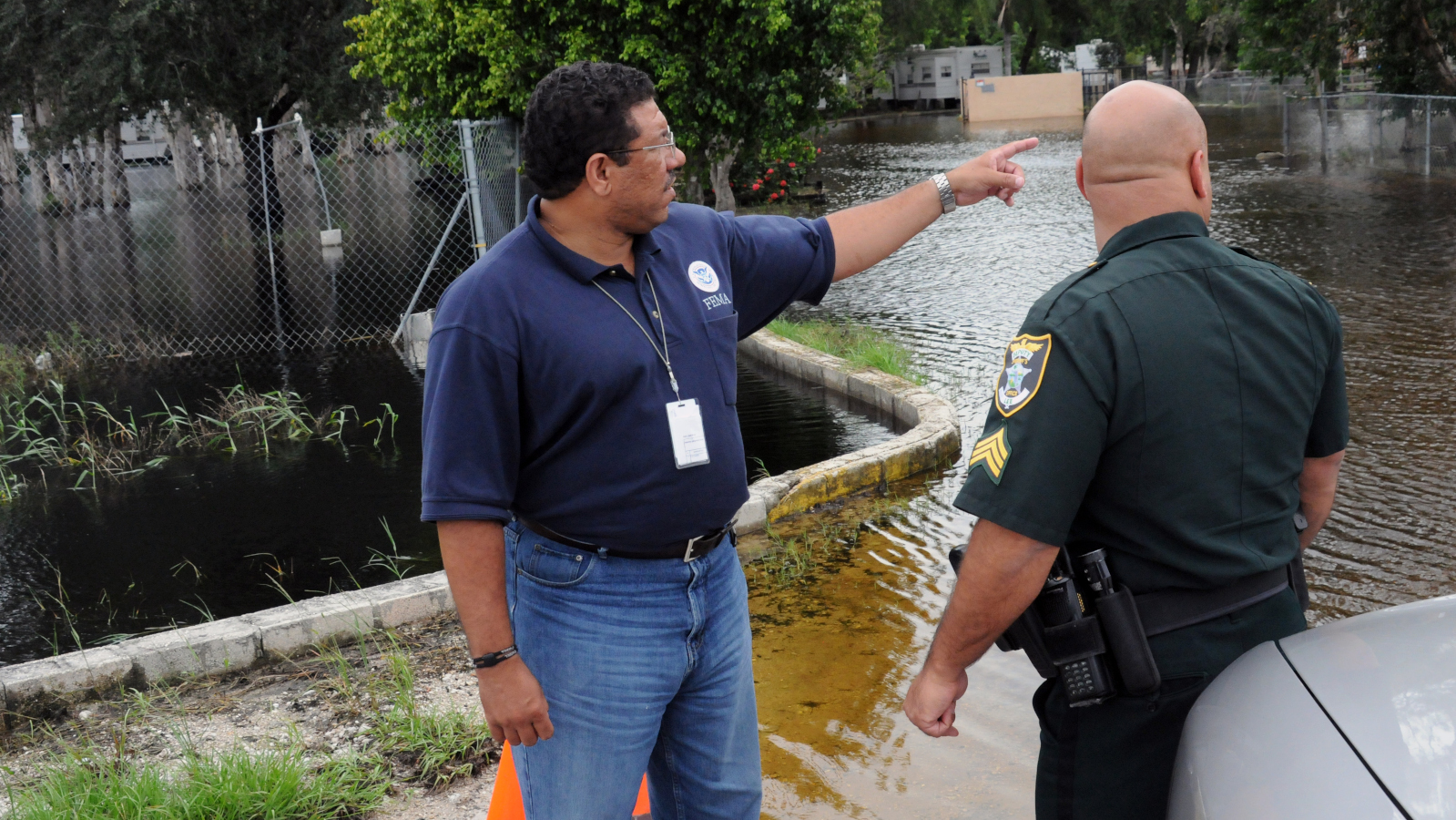
Entire buildings were swept off their foundations by Hurricane Michael’s destructive storm surge in Mexico Beach. Sand from the beach has covered the roadways, indicating that surge and waves easily overtopped the dunes and seawalls. | By USGS Coastal Change Hazards, USGS, NOAA
Some Florida homeowners can expect to see their insurance costs go up by 40% if their homes can't withstand severe weather.
Several insurance companies have sought these rate increases to cover losses from payouts for damages caused by extreme weather.
In 2017, Hurricane Irma made landfall and caused at least $50 billion in damages in the state, the U.S. National Hurricane Center said. That surpassed even Hurricane Andrew in 1992. That storm left behind damages to 65,000 structures in southwest and west-central Florida, the National Climatic Data Center said. Just the agricultural damage reached $2.5 billion from that hurricane, according to a Florida House of Representatives report. Many in the state were still recovering from Irma when Hurricane Michael hit the state in 2018.

Sean Harper
| Kin
Between water damage losses caused by those hurricanes and abuses of assignment of benefits, which the Insurance Information Institute said were reflected in a rise of lawsuits by 70% in 15 years, insurance carriers have suffered.
Carriers asking for rate increases include Edison Insurance Co., Capitol Preferred Insurance Co., and Velocity Risk Underwriters (on behalf of National Specialty Insurance Co.), the Insurance Journal recently reported.
Lower insurance premiums over the past few years made the situation worse for insurance companies.
“A lot of insurance companies lost money in the past few years,” Sean Harper, CEO of Kin, a home insurance technology company, recently told Insurance Rate Reporter. “As a result, they must raise rates.”
He said insurance companies have to at least break even on their underwriting. Losses can’t exceed the revenue that comes from premiums. But property insurance losses over the past several years have been high. Coupled with other costs, carriers need to raise rates, Harper said.
Failure to raise rates would cause more problems for the insurance companies. Harper said, as many of carriers are in danger of losing their credit rating.
“That would be a big deal because for home insurance, you have to have a certain credit rating, at least an A or above,” he said. “Or else it’s not valid insurance on a conforming mortgage.”
If an insurance company’s credit rating drops too low, Fannie Mae and Freddie Mac will not allow the mortgage to be securitized.
“Which in turn means you’ll really be out of business because no one will accept your insurance as valid,” Harper said.
Homeowners using insurers seeking rate increases can expect higher premiums.
“On average, they are going to pay a little bit more on insurance,” Harper said.
The carriers that need rate increases are those that recently had the cheapest rates. Those carriers with adequate or higher rates aren’t under the same financial stress.
“Not all homeowners will see an increase in the rates that they pay,” Harper said.
He said the 20% to 40% rate increases are large. The average homeowner’s premium in Florida is about $2,000. An increase could raise this homeowner’s premium $400 a year.
“It’s not catastrophic, but it’s not nothing either,” he said. “It’s not a good time for you to have your expenses go up.”
Homeowners can take steps to reduce their premiums. First, they can find a company that spends less on expenses.
“More than 35% of the money you are paying is going to stuff that is not claims or reinsurance. It’s really going to the overhead of the insurance company,” Harper said.
Kin structured itself as a tech company and sells directly to the consumer. Those are ways to lower the expense structure.
An insurer also can set up premiums for specific circumstances at each property. That makes pricing more granular. Harper said, which allows Kin and other carriers to set lower prices.
“It takes into account the specific weather exposure and construction resilience of the weather of the home,” Harper said.
This allows the insurer to give a more accurate quote. Customers with lower risks would see cheaper premiums.
As the climate continues to get warmer, the weather seems to get worse, he said. A place like Illinois, where Kin has its headquarters, has few extreme weather events.
Paradoxically, people are moving away from places like Illinois and to places like California, Florida and North Carolina, where the weather is more extreme, Harper said.
Even in Florida, homeowners can take steps to cut their premiums if their insurer offers granular pricing. This pricing method offers incentives to homeowners to make improvements.
“Incentives make homes more weather resilient,” Harper said.
Other ways to reduce premiums include installing the correct storm shutters, choosing the right type of window glass and attaching the roof to the walls of your house as strongly as possible.
“There’s a lot of stuff you can do to make your home more resilient with the weather,” he said.




 Alerts Sign-up
Alerts Sign-up